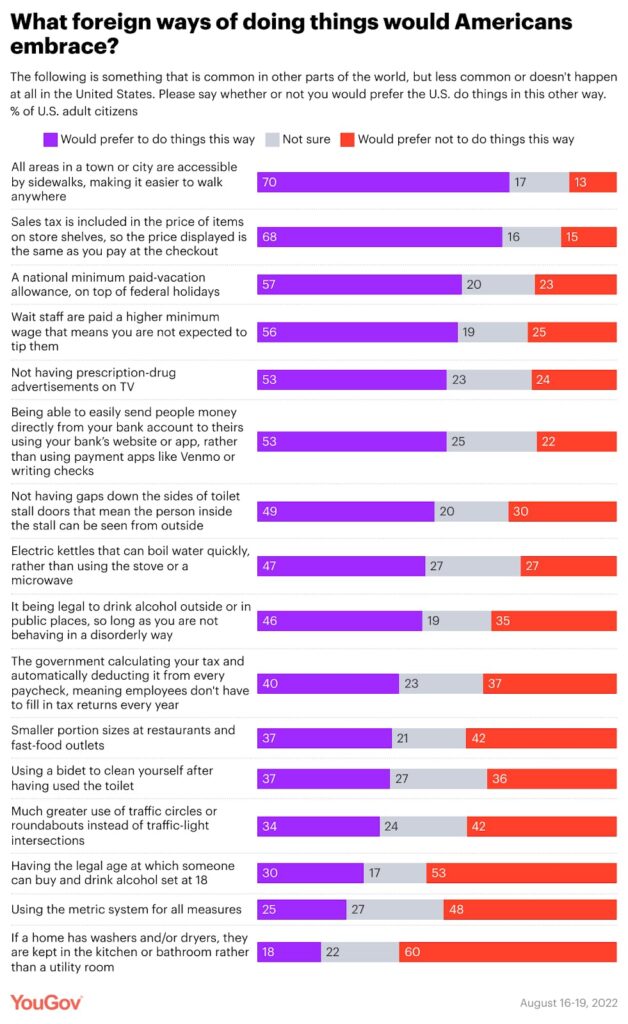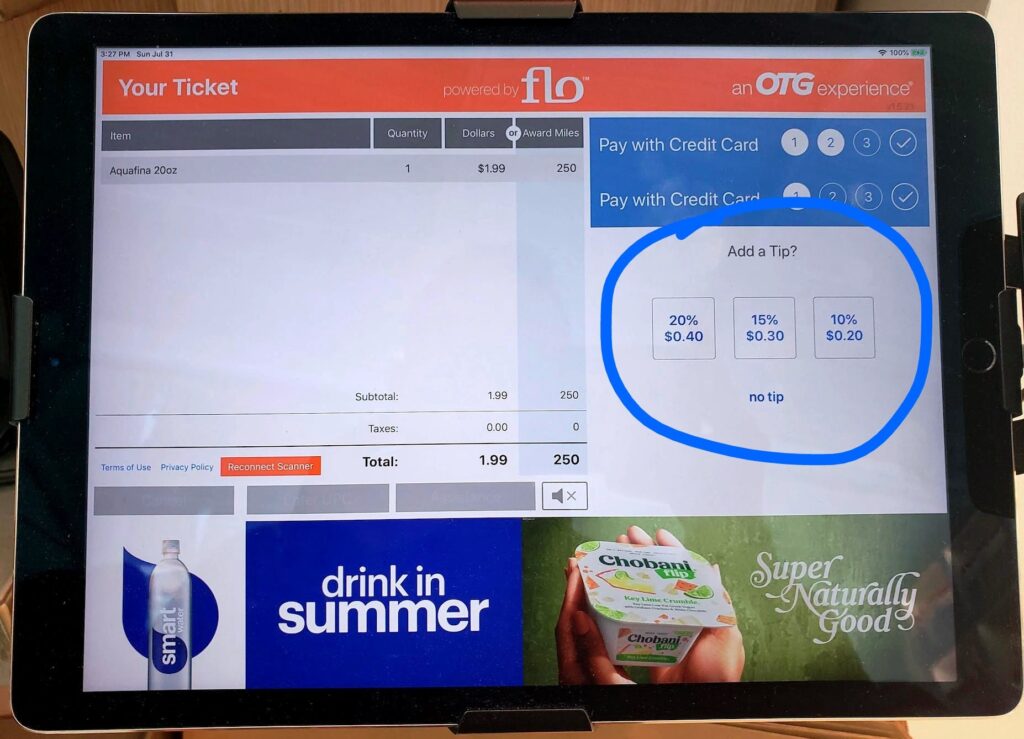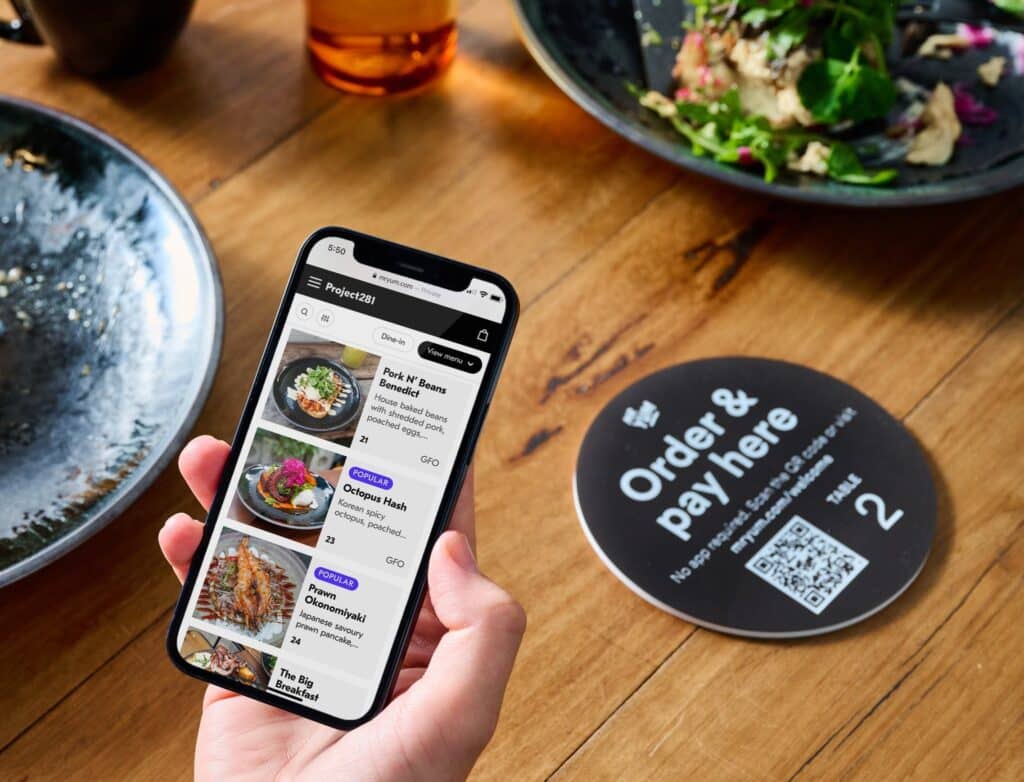Welcome to Alts Sunday Edition 👋
Today we’re looking at the world of tipping — that famous American pastime that has confused tourists for over a century.
This issue is a stray from the usual, but it’s worthwhile and timely. In the wake of covid, there seems to be a growing buzz & frustration around America’s tipping culture.
This topic has always fascinated me. As an American living overseas, I have a unique perspective on the matter. My wife has also worked at three payments companies. We talk about this a lot.
In this issue I’ll compare and contrast America’s tipping economics with Europe & Australia, and opine on the future of this cultural institution — one that may be weaker than you think…
We also have a short Q&A with Adrian Osman, co-founder & COO of the rapidly-growing restaurant platform Mr Yum.
Let’s go 👇
Table of Contents
Are Americans getting tired of tipping?
A few days ago, I woke up to a Reddit poll asking Americans, “What things from other cultures would you embrace?”

There were some…odd questions. And odd results too. (30% of Americans would prefer a gap in their bathroom stalls? Why??) and some I could not believe were so low (just 34% are in favor of more roundabouts? They’re way better. I will die on this roundabout hill!)
But one topic stood out to me: “Wait staff are paid a higher wage, that means you are not expected to tip them.”
56% of all respondents were in favor of this. Twice as high as those who were against it.
So are Americans starting to get fed up with tipping culture?
A look deeper into Reddit revealed some unenthusiastic responses.
“Awful and stupid tradition. Just plain unnecessary.”
“Tipping is the biggest case of Stockholm Syndrome ever placed on a society.” (oof, harsh.)
“I’m sick of tipping anxiety. The entire point of tipping is rewarding someone if they did a service well. Why is that an excuse for businesses to not pay their staff properly?”
This is anecdotal, but I’ve noticed the same on Twitter too. People complaining about needless ‘back & forth credit card game’ at restaurants. Or pretend ignorance by coffee shop staff when the iPad spins around. Or the prevalence of POS software in new types of shops that never requested tips before.

That last point is the most salient. See, it used to be just a few types of businesses that expected tips. Restaurants, cab drivers, valet parking, housekeeping, etc. But now Americans are seeing prompts at totally new places.. Grocery stores, retail outlets, and (astonishingly) self-checkout kiosks.

As we all know, during covid, restaurants suffered through debilitating lockdowns, aggressive patrons, and burned-out service workers. Naturally, customers felt bad about the situation, and wanted to support their local shops however they could.
Tipping, facilitated by convenient new tech (QR code ordering, touchscreens, tap pay, sleek UIs) made this easier than ever.

But post-covid, it’s as if a new expectation around tipping has been foisted upon Americans without their consent. A new protocol for society they never agreed to — silent but inescapable.
The Atlantic recently had a great article claiming technology and covid have colluded to transform the meaning of gratuity. CNN recently called modern tipping “out of control.”
It does feel like an anti-tipping movement is stirring as we speak. It’s almost like Americans travel overseas on holiday, see firsthand how much more efficient and generally better a tipless society can be, and experience a bout of frustration tinged with hints of jealousy.
What are the problems with tipping?
Okay, so we know the gripes. And perhaps the drumbeat is getting louder here.
But what if we stepped away from the anecdotes for a moment? What actual problems does tipping create? Why is it a non-ideal, arguably inferior system?
Let’s look at the facts:
Tipping doesn’t actually improve service
This is huge. In surveys, people claim that they tip more based on service.
However, studies have revealed customer satisfaction impacts the size of the tip just 15% of the time.
Numerous studies show tipping only loosely correlates to service, and most Americans just follow social norms when tipping rather than use it as an incentive.
Now to be fair, anyone who’s dined in Europe can tell you that the service is…well, different. I won’t say worse, because some diners prefer more of a hands-off experience (For example, I often think American waiters come on way too strong).
We can probably all agree that, all else being equal, American waiters work harder.
But see, all else is not equal, because tips are nearly 60% of American waiter’s paychecks! And the delta between service and tip amount is all so arbitrary. If the food tastes bad or the chef messes up, the waiter takes it on the chin.
If tipping doesn’t even achieve what it’s designed to accomplish in the first place (better service, higher customer satisfaction), then really, what’s the point?
Tipping is discriminatory
Tipping simply reflects society’s biases. It’s not the cause of discrimination but rather a manifestation of larger forces at play.
But there are some harsh facts to stomach here:
- Black servers receive smaller tips than white servers.
- Servers earn higher tips if they fit a certain demographic (women, good-looking, white, slender, 20s-30s, large breasts).
- Attractive white females can easily bring home thousands more than their counterparts.
The people getting tipped handsomely are obviously going to be pro-tipping too. This is the whole problem — tipping massively benefits some servers and seriously disadvantages others.
And there’s disparity across age groups too. (Although give boomers some credit here for once: people aged 65+ are the best tippers.)

Tipping perpetuates classism and sexism
Minorities and lower socio-economic Americans tip less, which leads to other issues.
And what’s more, a study found that waitresses reported lower levels of sexual harassment in states with higher minimum wages and lower tips.
This implies that in restaurants with high levels of tips, customers and even managers feel greater power and entitlement. (Anyone who has worked in a restaurant surely has a few horror stories.)
Tipping causes customer anxiety and guilt
Okay, this is anecdotal, but it’s worth mentioning: I believe all the newfound uncertainty around tipping causes cultural confusion.
On one hand, plenty of consumers have felt tremendous guilt for the privilege of working from home during the pandemic, and have a renewed respect for the people who deliver packages to their doors and put food on their shelves.
On the other hand, Americans feel torn between wanting to help these overworked, underpaid staff, and conserving cash that they technically aren’t obligated to pay.
For folks outside the US, put yourself in the shoes of an American for a moment. You’re at the gas station after a long day of work. You just want to pop in and buy a bag of chips. In the old days, that should take about 15 seconds. But now you’re faced with a whole UI workflow:
Yes, No, Continue, Yes, Okay, No Thanks. Confirm. Sign. Confirm. No receipt. Okay.
It’s not just the fact that the machine is asking you for a tip now; it’s the delay these new POS systems cause. We all lead busy lives. It shouldn’t be that hard to buy a candy bar.
Look, there are certainly bigger problems in the world than tipping anxiety. (Not to mention there’s no good way to measure this metric in the first place.) But it’s definitely non-zero.
One barista in Colorado told me that he’d watched a customer contort his fingers on the tablet to make it look like he was tipping 20 percent when he was really selecting “No tip”; far from being offended, the barista said he now deploys the tactic when checking out elsewhere. Other service workers I spoke with suggested that the tablets aren’t the real problem here: If you can afford a $7 latte, they argued, why are you bristling at a $1 tip that would help your server?
– Atlantic writer Charlie Warzel
Taxation issues
There are also issues with tax collection.
It’s no secret that tips can easily be hidden when paid in cash, and in 2018 the IRS claimed that service employees not divulging their tips accounted for 10% of all underreporting.
POS systems streamline tax reporting for businesses, but cash tips (yes these still exist) are almost completely hidden from tax agencies’ eyes.
Tipping is arbitrarily applied across occupations
Okay, this is a weird one, but hear me out…
There is surprisingly little rhyme or reason to the tipped occupations.
For example, tipping is biased towards customer-facing roles, and often does little to help “back of the house” employees. Chefs, kitchen workers, cleaners, etc. Sometimes these folks get paid out a portion of tips, but not always. Again, there are no hard & fast rules for this stuff. It’s arbitrary.
Whereas digital terminals collect & account for tip money to be distributed later, at quick-serve locations (ice cream shops, etc), traditional tip jars can be cleared out at the end of the day, with no paper trail for if or how it gets split.
This divide has caused some American businesses to declare themselves tip-free in order to reduce the wage disparity between front and back of house. Other restaurants have implemented a 15% service charge which they split 50/50 between front and back.
But housekeepers don’t seem to be benefiting from an increasingly cashless society. Where’s their POS system?
What about sanitation workers or janitors? They clean up after your mess too. And they often do a great job! Where’s their tip?
As I said, arbitrary.

Australian perspective: Interview with Adrian Osman
I recently had the pleasure of chatting with Adrian Osman, co-founder & COO at Mr Yum.
Mr Yum is a Melbourne-founded mobile ordering and payments platform that’s been doing QR codes since before it was cool.
The company was founded in 2018, before the pandemic hit. But once QR codes and contactless ordering became the norm, Mr Yum kicked into high gear.
They’ve since drastically expanded operations — serving over 5000 restaurants, pubs and cafes across Australia, The UK, and The United States.

As COO, Adrian is in a special position in this industry, because he sees what’s happening on both sides of the Pacific (and Atlantic, for that matter). While Mr Yum has tipping functionality in all countries, it turns out very few Aussies are actually leaving tips:
“You’re talking about 1-2% of sales, that area. It’s a very low percentage of total sales volume. The vendor is in control here. We give restaurants the tools, and they can use them if they want to. But many places choose to not have it switched on at all.
Through platforms like Mr Yum, many Aussies are seeing tip options for the first time, so it’s no surprise the uptake is so low. But I for one am glad it exists, because QR code ordering has completely changed the way drinks are ordered in pubs here:
“Before covid, servers weren’t bringing you drinks. You had to get up, line up for a drink, and place your order — and you probably weren’t going to tip on a pub beer. But now, you order from your phone, and 90 seconds later an ice-cold beer hits the table. Magical! The waitstaff may actually have more work to do than before, and some customers may feel compelled to tip because of the excellent service.”

So yes, Australia has traditionally had a totally different model to the States, and those models are starting to converge a bit. But instead of Australia borrowing culture from the US, Adrian believes it’s actually the US that will borrow from Australia here — specifically around what’s known as the pooled tip model.
“In the old-school way of doing things, a server would “own” the table. Those were their tables, that was their real estate. But the fastest-growing model is the pooled tip model, because it’s much fairer. Tip revenue gets tallied up and split among the waiter, the food runner, the chef, and others. This way everybody shares the wins. It’s a more ethical model, and I think it will grow in the States.”
Finally, I asked Adrian if he thinks tipping will ever truly take off in Australia, and what part if any Mr Yum will play in this.
His answer surprised me:
“I actually think the US model is going to become more like Australia’s over time. Tipping is correlated with minimum wage. Australia has one of the highest minimum wages in the world, so there’s no need to tip here. As minimum wages go up in America, the need to cover the rest through a tip goes down.”
It’s funny, because in many ways Australia follows in America’s “cultural footsteps.”
But perhaps tipping will prove to be the opposite. 🤔
Closing thoughts
Since living in Australia, my honest opinion is that yeah, embedded tipping culture is mostly a waste of time. It’s a comical game that everyone is stuck playing.
It must be said that despite the gripes, people are still tipping. The frequency of gratuities at full-service restaurants rose 17% in Q4 2022.
However, alternate studies have shown different results. With inflation putting upward pressure on prices, Popmenu revealed only 43% of customers are tipping, compared to 56% a year earlier.
There is some economic merit to relieving restaurants of the full wage burden. It makes restaurants cheaper to operate, and ultimately I suppose that’s a good thing.
But remember, the burden never actually goes away. Someone has to pay the wage, one way or the other. With tipping, this burden just gets passed around from employer to customer, like a giant game of hot potato.
I think many Americans are tired of playing this game.
They’re questioning why they are playing this weird old game in the first place, why they’re paying this arbitrary tax, and how much longer they have to pretend to enjoy doing so. There’s a general sense that things should just cost what they cost, and that’s that.
Look, in theory, there is nothing wrong with tipping. If you want to leave someone a tip for great service, great! Do it!
But to embed that into the core fabric of society like America has done is seriously flawed.
Tipping should always be optional, but it should be truly optional. Not “pretend optional” like it is today.
Further Reading
- Ending tipping. People are curating “End Tipping” websites and subreddits with loads of information and resources.
- Tip-free restaurants. The movement is growing. Here’s a spreadsheet with 216 restaurants. But so far they haven’t been very successful.












